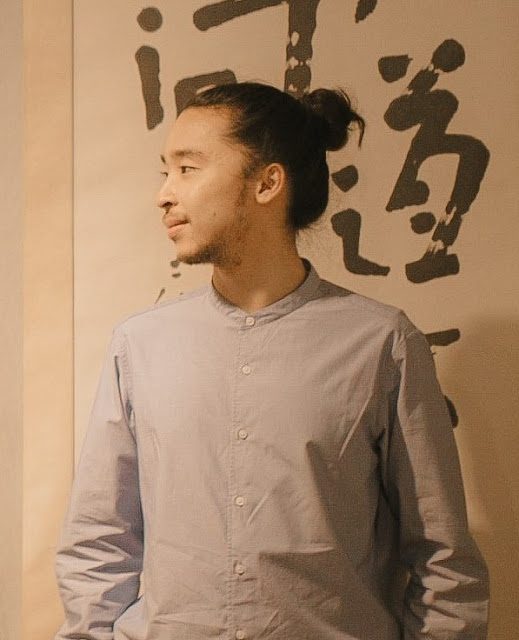Moringa: A Simple and Powerful Source of Inspiration on How We View Money
Do you recognize what this plant is?
This is called a moringa oleifera, often known by many names like the drumstick tree, the miracle tree, or the horseradish. In my place, we call this kamunggay. In a moment, I'm going to take us through three short stories from my childhood and with this lens, hopefully we will see the message behind how a simple plant is able to make us understand a very important lesson in life.
Let's begin, shall we?
--
A true test of patience when I was growing up involved a moringa plant or kamunggay.
On weekends, my mama and papa would come home from the market with the grocery items. I remembered my sister and I would grumble heavily before we would move and rush to prepare a bowl to be placed on the table. Clearing anything unnecessary on top of it, we would take out the moringa from the grocery bag and start to pluck out its leaves. Carefully and ever so gently, as we didn't want to include the stalks, the leaves would be removed from its slender stipe.
Once we have gathered enough and have cleared the bunch of the plant, papa would wash them and finally, they're added to the dish he's cooking. Especially, tinolang manok. Everyone would enjoy the dish and I can still vividly recall how eager we were to take a sip of the soup and savor the tasty dish. A calming atmosphere of contentment and happiness surround us at that moment, as a family.
--
I distinctively recall one day during my childhood, when my friends and I were playing tag outside our home, I tripped over and wounded my knee. Crying buckets of tears, I rushed back home and received some scolding before having my wound treated. It would be washed first and then my aunt would head outside the house, break a branch of kamunggay, wash it and grind it. Once the leaves were grounded up, she would carefully place it on top of my newly cleaned wound and tie a piece of clean cloth over it. A few days later, my wound would begin to heal.
Through that experience, I realized then that it was the same plant that had taught me and my sister patience, the same plant that had been added to a delicious treat that tasted like happiness. It was wonderful, as a young kid to understand that a simple plant, the moringa or kamunggay can also treat wounds.
--
So, I began to get curious.
One time, I saw my aunt cutting a branch of the plant. To my dismay, she cut quite a huge portion of it. Having grown a soft spot for a plant that brought many wonders and healing, I began to feel sad. That evening, I asked my mama why my aunt had cut the plant. She gathered us into the living room and told us the story of how cutting the branch of a moringa is a form of growing more of them. I didn't understand what it meant then, so I slept that night feeling confused.
A few weeks later, I went out of the house and saw that the cut branch had suddenly grown new leaves! How happy I was that day. I was also told that my aunt shared a branch of the moringa to her friend so that she could grow her own. That's amazing! More people having more kamunggay - to heal, to make good dishes, and to share with others was an inspiring feeling.
--
I have shared with you three of my life stories involving a plant to demonstrate an important topic surrounding our narratives on money. Recently, I was invited by my friend Winifred to attend the Honesty Circle. It is a "safe space that brings people together to have a truthful dialogue about money." The topic was changing money narratives for authentic relationships.
During my experience, I gained a deeper understanding of how we all have many different ways to describe how we deal with and treat money. For example, our upbringing may play a crucial role in our narratives but we should not let it define who we are; the media, society, our friends, can also influence our views toward it. Understanding where our narratives are coming from and identifying what they are could help us steer towards a better direction in the way we handle relationships. Sometimes, arguments and misunderstanding really isn't about the money but because of the hidden values and beliefs we have about it.
That evening at the Honesty Circle, a question was thrown to us and we were to draw our answer.
"How have my narratives around money affected how I react to my loved ones in our daily living?"
My view and narrative of money are like a moringa plant. It is meant to be shared with the people that we love and those around us. On my drawing, I cut a branch of the moringa to share with my parents. It is my own personal commitment to let my parents - who nurtured me into the person I am now - experience the best in life to the best that I can.
I also shared a branch with my sister. I believe in her and her capabilities and so sharing a branch with her in the form of supporting her education is one way I could show my support. She was able to use it well and has successfully completed her course with flying colors.
Money to me, represented by the moringa is also a tool to create a positive impact on the people around us. Back home, there is a famous statement among the young ones that goes, "Bahala'g pobre basta hilas", which indirectly translates to "I don't care if I'm poor as long as I can appear rich." This isn't the positive impact that we are trying to achieve because this belief can be dangerous.
When we become too dependent on our outward looks and allow the external world to dictate who we should be and how we should act, the tendency is that we become blinded by it and forget who we are and even shut our own voices down. Interestingly, a growing body of evidence, cited from the book It's Not About You written by Tom Rath, suggests that the "defining features of a meaningful life are connecting and contributing to something beyond self."
Like the story of the wound earlier, money could also help in our healing - we can use it to nurture our mental and emotional health by subscribing to meditation classes or activities that promote positive well-being. This does not have to be expensive. It could also be as simple as buying sweet candy once in a while and savoring the experience fully. Healing could also mean maintaining our physical well-being through exercise, and spiritual well-being through prayers and supporting any cause that you value and strongly believe in.
Presently, my partner and I are about to embark on a new adventure together as an engaged couple. The moringa that you see in the center of my drawing serves as the means we can use to nurture our future family.
Money should inspire us to be more connected to the people who matter.
We should use it as a tool to bring us closer to who we love. It feels better to know that you have spent your hard-earned money on activities that make you more grounded, humble, and flourishing. Yes, we can splurge and we can do whatever we want with what we have earned, but setting a direction and a meaningful purpose for our spending will definitely mean more than just blindly following the bandwagon.
"If you defer investing your time and energy until you see that you need to, chances are it will already be too late", says Clayton Christensen, author of the book How Will You Measure Your Life. He adds, "Relationships with family and close friends are one of the greatest sources of happiness in life. It sounds simple, but like any important investment, these relationships need consistent attention and care." The book is co-authored by James Allworth and Karen Dillon.
I'm thankful to my Mama Estela and Papa Tito for teaching me the value of humility and generosity. I'm thankful to my partner's parents, Tita Hazel and Tito James because they taught us the same values and also about growing our money wisely with hard work and perseverance. I'm thankful to my fiancée, Alex because he taught me to be patient about how and where to spend the money and being more mindful of the choices we make surrounding this topic.
A special appreciation to Mommy Hening and Tiyo Jessie, because they are the people I look up to in their high level of commitment to give, despite not having much for themselves. They are kind, generous and really an inspiration.
Money can be inspiring. Let our intentions be directed for our growth and for nurturing the people around us. At different stages of our lives, we may experience various challenges involving money and our beliefs about it and in order to overcome this, communicating openly and being vulnerable - especially with the people who truly matter and who you truly value - will make a big difference. We should not let our past beliefs control us. This is what I learned from that one session with the Honesty Circle. It was a memorable experience for me.
How about you? What is your narrative about money?
Thank you for staying with me up until this point.
Love,
Mary Jedde
Sources:
1. "It's Not About You: A Brief Guide to a Meaningful Life" by Tom Rath
Loc 307 of 389 (Living a Life of Contribution)
2. "How Will You Measure Your Life?" by Clayton M. Christensen (+), co-authored by James Allworth and Karen Dillon
Page 98, The Ticking Clock












I read you blog it is interesting and valuable post.
ReplyDeleteIf you are looking moringa leaf tea online Me moringa for life it best destination for pure moringa.
NATURAL HEALTH CARE
ReplyDeletethe article is very interesting and useful, if you need a reference, you can check it here https://ners.unair.ac.id/site/lihat/read/1228/manfaat-daun-kelor-bagi-kesehatan
ReplyDeleteOnly recently discovered the powers of moringa and have been taking it daily in my morning smoothie.
ReplyDelete